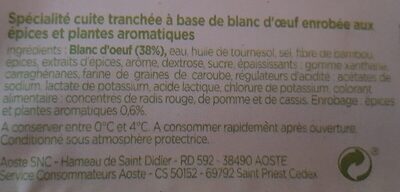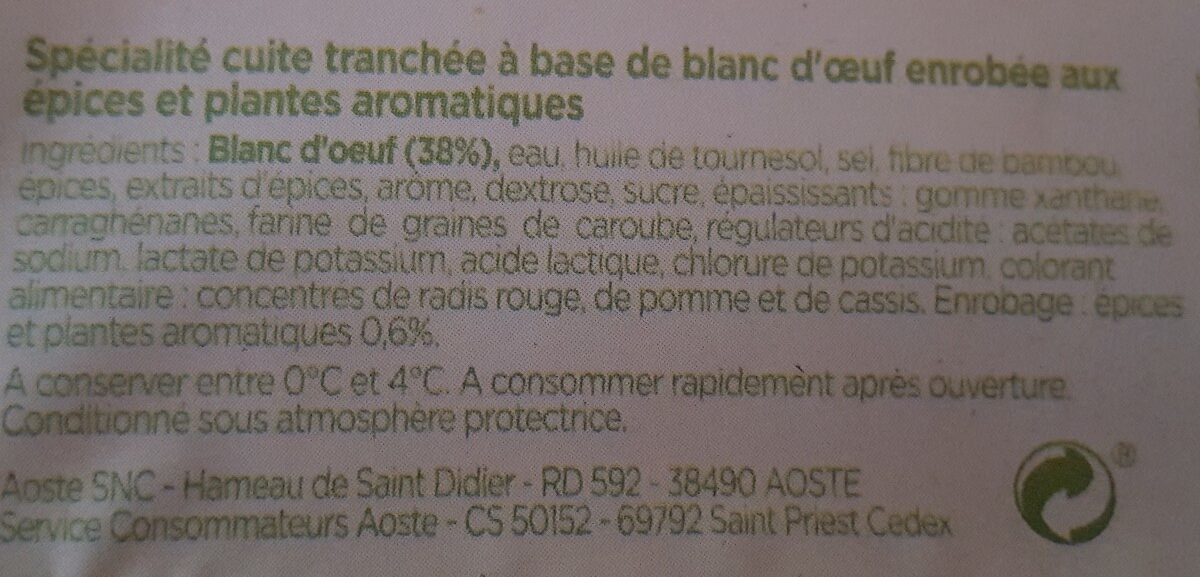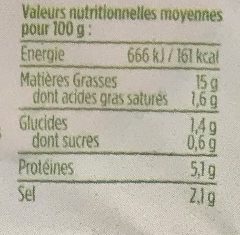Le végétarien à la Méditerranéenne - Aoste - 100 g
This product page is not complete. You can help to complete it by editing it and adding more data from the photos we have, or by taking more photos using the app for Android or iPhone/iPad. Thank you!
×
Barcode: 3449865280177 (EAN / EAN-13)
Common name: Spécialité cuite tranchée à base de blanc d'oeuf enrobée aux épices et plantes aromatiques
Quantity: 100 g
Brands: Aoste
Categories: Plant-based foods and beverages, Plant-based foods, Meat alternatives, Meat analogues
Labels, certifications, awards:
No gluten, Vegetarian, European Vegetarian Union, European Vegetarian Union Vegetarian, Green Dot, No lactose


Countries where sold: France
Matching with your preferences
Environment
Packaging
Transportation
Report a problem
Data sources
Product added on by kiliweb
Last edit of product page on by fabi2.
Product page also edited by autorotate-bot, itsjustruby, openfoodfacts-contributors, packbot, roboto-app, sebleouf, tacite, tacite-mass-editor, yuka.RzRRNE82WWZtdWtocDhVYW9RNkwzNEpPNmNldFpUbUpDczBjSVE9PQ, yuka.WmFFc0FxSWhtcU5Wb3ZJajdqZk53ZjlKNHFUNFhYcXNLTllmSWc9PQ, yuka.ZjY5WkZMd2JuTXNucGZJdStqNkUxL1JVemMrNEIxbThGc0FvSVE9PQ.











